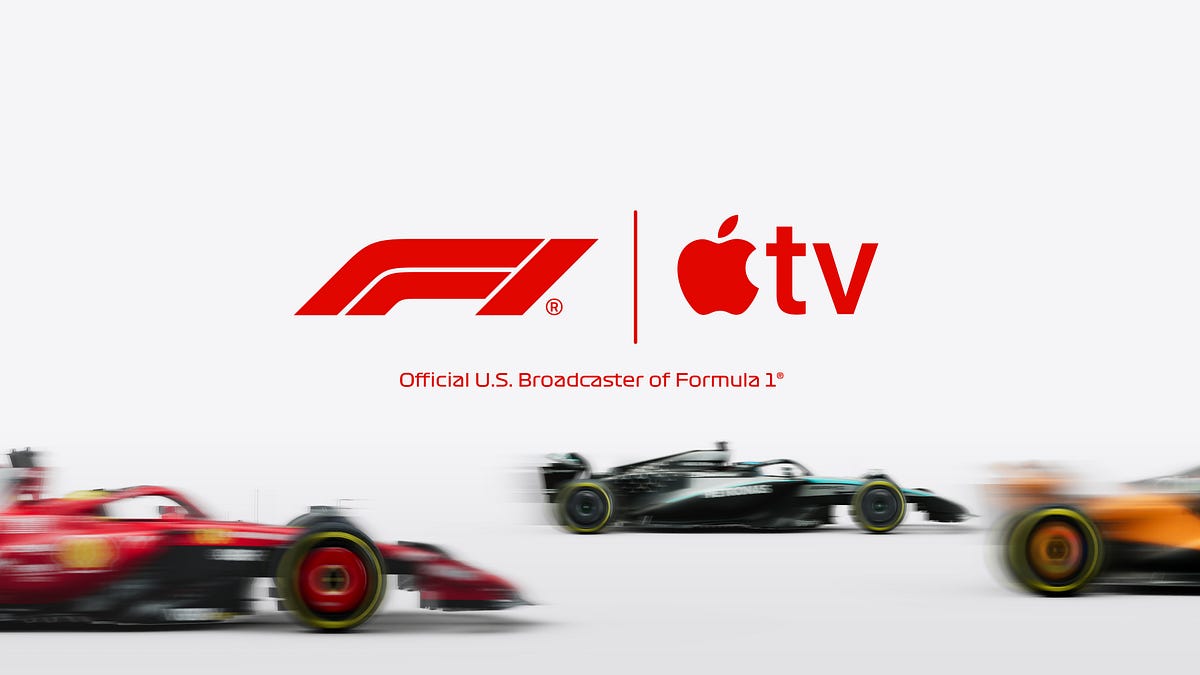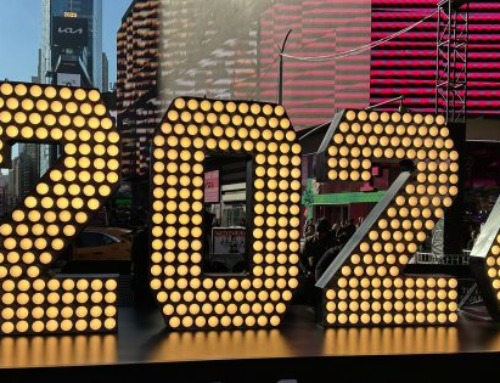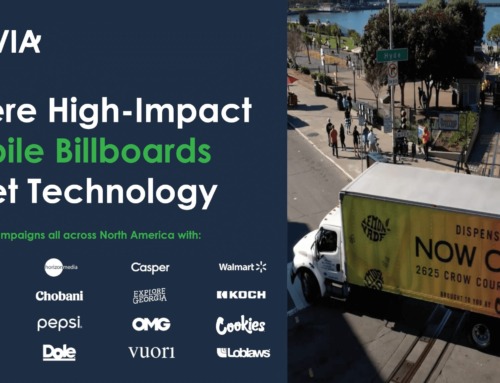And what it says about the current sports media landscape and future brand opportunities 
On Friday, Apple and Formula 1 announced a five-year partnership that marked a milestone in the shifting landscape of sports media. As part of this partnership, beginning next year, Apple TV (the streaming service previously known as “Apple TV+”) will deliver comprehensive coverage of Formula 1 (F1), with all practice, qualifying, Sprint sessions, and Grands Prix available to Apple TV subscribers in the U.S. In addition, select races and all practice sessions will also be available for free in the Apple TV app throughout the course of the season, reaching a broader audience base of Apple users beyond the paid subscribers.
Currently, F1 fans in the U.S. can access the racing league’s content via the F1 TV Premium, F1’s own streaming channel. As part of this deal, F1 TV Premium will continue to be available in the U.S. but via an Apple TV subscription only, and will be available for Apple TV subscribers at no extra cost. This stands in contrast to Apple’s existing deal with the Major League Soccer (MLS), which requires Apple TV subscribers to pay an additional MLS Season Pass for $15 a month to gain access to its matches¹.
This marks a structural shift in Apple’s distribution strategy. The company is treating F1 content as an inherent part of its streaming offerings, not just an optional add-on, as it aims to build an always-on acquisition and retention engine for Apple TV.
Overall, this deal represents a big leap forward for Apple’s sports content strategy and, by extension, the sports media landscape at large. It feels distinct from the other high-profile sports media rights deals in three aspects: F1’s long-term bet on streaming over cable to grow its fanbase, Apple’s ecosystem-wide push to push F1 content, and a joint effort to drive fan engagement via ancillary content.
As analyst Ben Thompson concluded in his Stratechery column on this deal:
This is a very important deal for sports rights in the long run. If Apple succeeds that is good for the sports leagues, because they will have legitimate alternatives to the traditional broadcasters, which will drive up prices in the long run; if they fail, then ESPN will regain some negotiating leverage, because their existing reach will prove to be worth a lot.
Let’s break down these three aspects and see what they say about the competitive landscape and the future growth opportunities of sports media in 2025 and beyond.
A Calculated Long-Term Bet on Streaming
F1’s current U.S. broadcasting deal with Disney’s ESPN is set to expire after the ongoing 2025 racing season. ESPN, which paid F1 around $75 to $90 million a year, reportedly told F1 to explore other options after its exclusive bargaining window lapsed at the end of 2024. Apple reportedly bid as much as $150 million a year for the rights to air the races, which is a nice increase in short-term payout for F1.
Some media analysts were quick to point out that Apple TV has a smaller audience reach compared to that of ESPN, which could hinder the league’s long-term growth. The exact numbers are rather complicated to parse, given the different parameters (U.S. vs. global; pay TV vs. streaming) with which the two companies report their subscribers².
Still, a good comparison point that I found is from a Pew Research Center survey conducted in April 2025, which found that 25% of U.S. adults say they have watched content on Apple TV, vs. the 21% say they have watched ESPN+. So, essentially, Apple TV has a slightly higher audience reach than ESPN+ in the U.S. But, factoring in the still-sizable amount of viewers that have access to ESPN as part of their cable package, ESPN obviously reaches a much larger viewership overall, despite the shrinking cable audience.
Therefore, one could see the argument that F1 choosing to move off ESPN to exclusively stream on Apple TV is a short-sighted move that prioritizes a short-term windfall over the long-term health of the league. This take reflects a larger trend of major sports leagues signing deals with multiple media channels to maximize their media rights deals, only to leave fans with a confusing and costly reality of following their favorite teams over various streaming services and regional sports networks.
For F1, this Apple TV deal is a smart move that avoids such confusion for the fans. If you’re an F1 fan living in the U.S., you’d only need to pay for one streaming service, Apple TV, to get all of the F1 content. In contrast, Forbes estimates that, for NFL fans who cut the cord with cable TV, it would cost at least $765 to watch every regular season NFL game.
Live sports have been the last bastion that holds the cable TV package together. Per a 2025 Deloitte survey, among those who still pay for cable TV, the top reasons are live news (43%) and live sports (41%). Yet, the cord-cutting trend has been steadily chipping away at the cable TV customer base, as 49% of consumers surveyed by Deloitte currently have a cable or satellite TV subscription, down from 63% three years ago. As more live sports follow the audience from cable TV to streaming, and younger audiences prefer to consume sports content via highlight clips on social media, the cable audience for live sports will likely continue to shrink.
All of these point to a long-term calculation on F1’s part to bet against the decline of cable TV and grow its audience via a dedicated distribution partner like Apple. Unlike ESPN, which has rights to just about any professional sport under the sun, Apple TV carries very limited sports content. Therefore, it is no surprise that F1 will be treated as a hero property in Apple’s streaming portfolio, and given a concerted, ecosystem-wide push to capture attention and grow the franchise.
An Integrated Ecosystem-Wide Push
As part of the deal, Apple will amplify the F1 content across Apple News, Apple Maps, Apple Music, and Apple Fitness+. The exact implementations remain to be seen, but there are a lot of interesting ecosystem levers that Apple could pull to engineer attention for the sport. Whether it’s Apple Music programming official team/driver playlists, or Fitness+ rolling out F1-inspired HIIT/core sessions, even casual Apple users could keep bumping into F1 across Apple’s ecosystem, which widens discovery at the top of the funnel and nudges them towards paid viewing on race day.
In addition, Apple announced that Apple Sports, the free iOS app for iPhone and an obvious integration point, will feature live updates for every F1 race for each Grand Prix across the season, with real-time leaderboards, season driver and constructor standings, Live Activities to follow on the Lock Screen, and a designated widget for the iPhone Home Screen. All these are the kind of deep integrations that F1 wouldn’t get with ESPN.
That said, Apple should be careful not to overextend this type of integration. The Apple Wallet push for F1 movie tickets earlier this year drew criticism from some iPhone users for feeling presumptive, and it’s a useful cautionary tale. To avoid similar backlash, F1 tie-ins should be value-first and opt-in, easy to mute, and contextually triggered. Done right, Apple can showcase F1 across its services without crossing into intrusion and nuisance.
Audience Engagement With Ancillary Content
Speaking of the F1 movie, integrated storytelling will be crucial to Apple’s efforts in cultivating a growing F1 fanbase. Apple made a massive bet on the general public’s interest in the racecar sport earlier this year with its Brad Pitt-starring summer blockbuster “F1,” which grossed nearly $630 million globally.
Nowadays, the real value of sports content is often captured through ancillary content: podcasts, social media, and streaming-adjacent experiences that keep fans engaged in between actual games. Apple could do more in this regard by building on the F1 film’s broad appeal to create a continuous, year-round F1 narrative across its services, such as a Drive to Survive-style docu-series and short-form explainers that onboard new fans.
F1 is certainly not new to this type of integrated brand-building and fan engagement through ancillary content. In recent years, numerous Formula 1 teams and drivers collaborate with influencers and celebrities, star in hilarious TikTok edits, start podcasts, and more to remain relevant and top of mind for younger F1 fans. The latest move from the league is to team up with Amelia Dimoldenberg, the host of Chicken Shop Date, for a four-part YouTube series called “Passenger Princess,“ where she’ll learn to drive with various F1 stars. This series aims to build on her previous viral episode with F1 star Lando Norris, which has amassed 4.5 million views, reaching audiences beyond the typical sports fan demographic.
If Apple can successfully lean into this type of creator-driven storytelling that younger fans trust the most and cultivate parasocial relationships between fans and racers, then it could be a great way to convert casual scrollers into habitual race-weekend viewers, while also improving retention in Apple TV. In today’s commentary-heavy media landscape, every competitive sport franchise lives and dies by the lores it spins. If TBPN’s daily livestream can somehow make a compelling talk show for investors out of personnel changes at the tech companies, then there’s no excuse for sports rights holders not to do the same with star athletes and season-long storylines.
Taking a step back, F1’s value as a US sports property and Apple’s credentials as a sports broadcaster remain unclear. F1 averaged around 1.11 million viewers per race on ESPN/ABC in 2023 and again in 2024 — second-best ever, but essentially flat and still far below U.S. staples like NASCAR.
Meanwhile, Apple has world-class distribution but a short résumé in mass-audience, high-stakes sports. Besides the MLS deal, it also has a Friday Night Baseball package, as well as some upcoming live NBA games in its immersive format for Vision Pro viewing. But the Cupertino company has said it isn’t interested in buying parts of a season, as is common for football and basketball media rights.
This partnership could either solve each other’s gaps or expose them, and how it will go will depend on how well Apple converts free content and ecosystem-wide promotion into sustained, measurable reach for F1.
But then again, both FI and Apple are taking a gamble on a new model, given that this is a first-of-its-kind deal. Ultimately, F1 isn’t going to Apple for its audience reach; it’s going to Apple because of the huge upfront offer. Apple, on the other hand, is trying to gain subscribers via F1, hence paying a premium for the rights. If this works, however, other non-major pro leagues will copy it, and we expect other streamers will be more willing to outbid traditional networks for media rights too.
For advertisers, a future where mainstream live sports are a default offer inside streaming services could unlock a new set of brand opportunities that are not only more interactive and measurable, but also co-creative and contextual. For example, there could be space for branded ancillary content that shows up for fans after a big race, which can appear natively in the Apple TV rail, meeting fans where they browse. Perhaps brands can sponsor specific “chapters” or highlights of the race, turning the recap itself into a premium, co-branded content unit that feels additive rather than interruptive.
- Interestingly enough, a few days after the F1 deal was announced, Apple also made all MLS playoff matches available to all Apple TV subscribers without requiring the MLS Season Pass.
- As of December 2023, ESPN reaches approximately 70 million pay television households in the United States, down from its 2011 peak of 100 million households. But its streaming service, ESPN+, has about 25 million U.S. subscribers as of Q1, 2025. Meanwhile, Apple has stated its streaming service has “significantly more” than 45 million subscribers worldwide, but has never released an exact official number, or a U.S.-only subscriber number, for that matter. Estimates from third-party sources vary, but usually don’t exceed 50 million paid subscribers.
Why the Apple-Formula 1 Partnership is Major Deal was originally published in IPG Media Lab on Medium, where people are continuing the conversation by highlighting and responding to this story.





